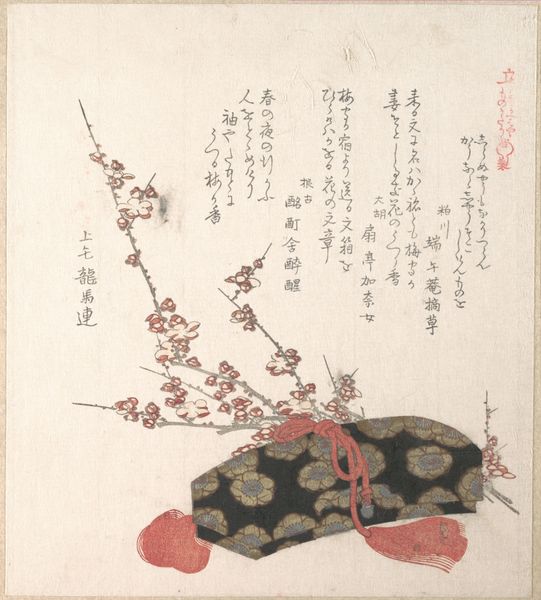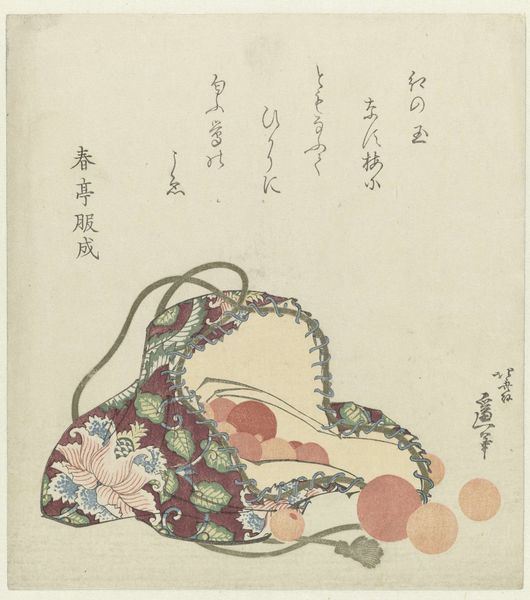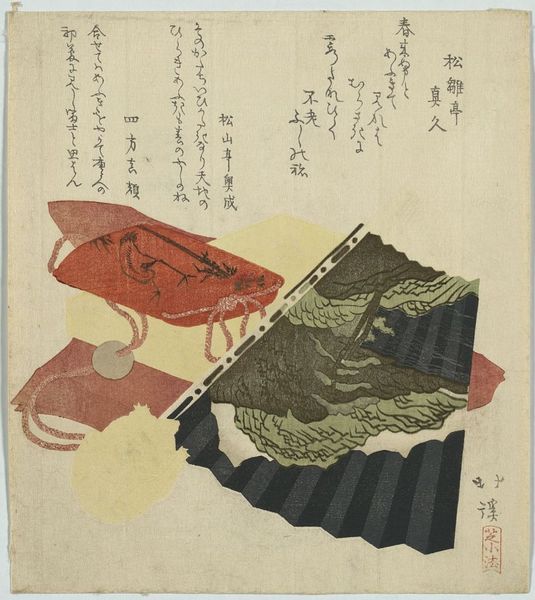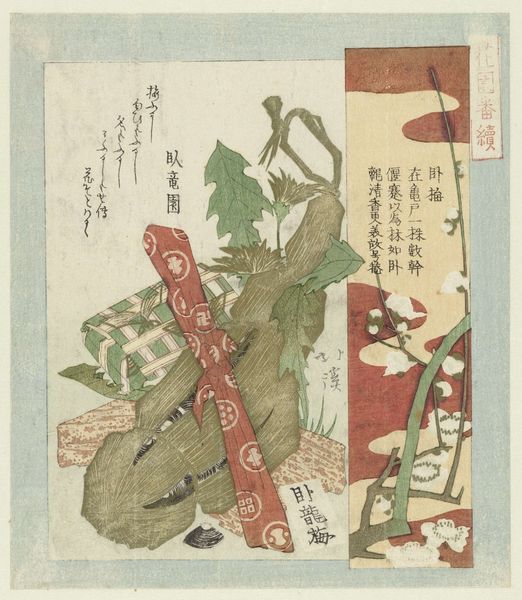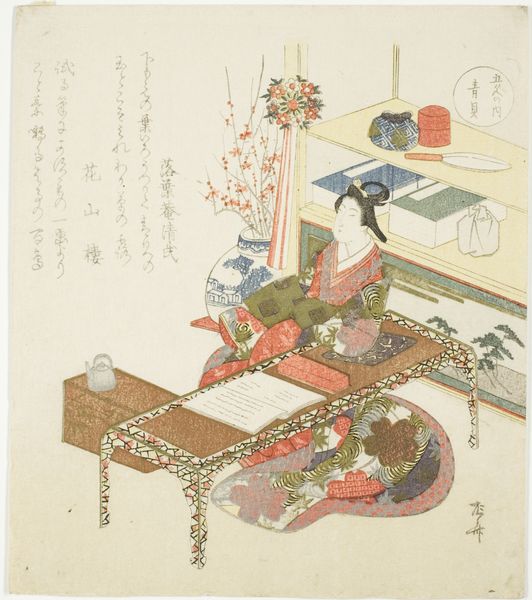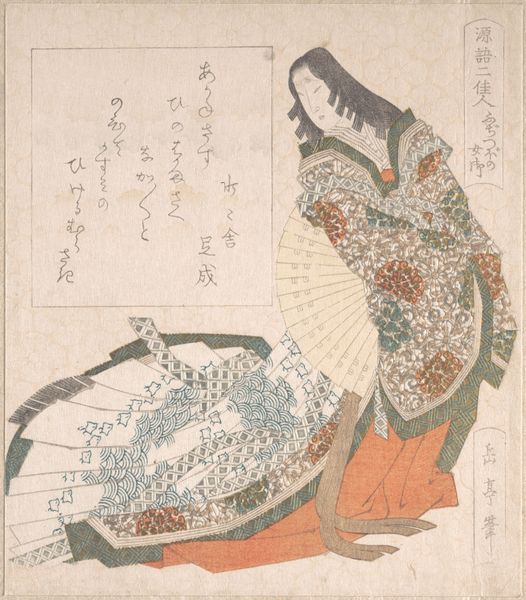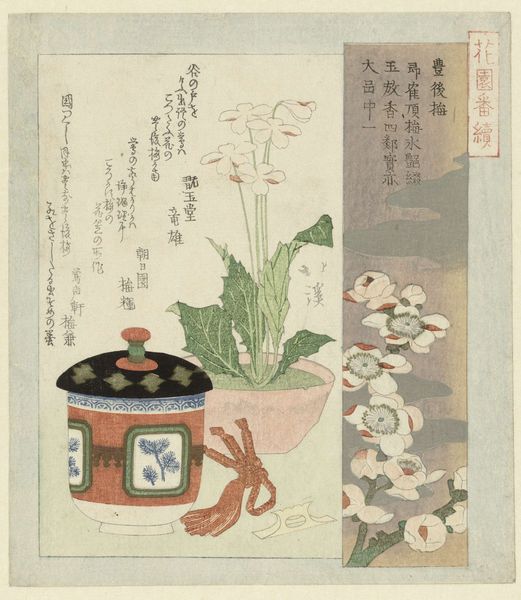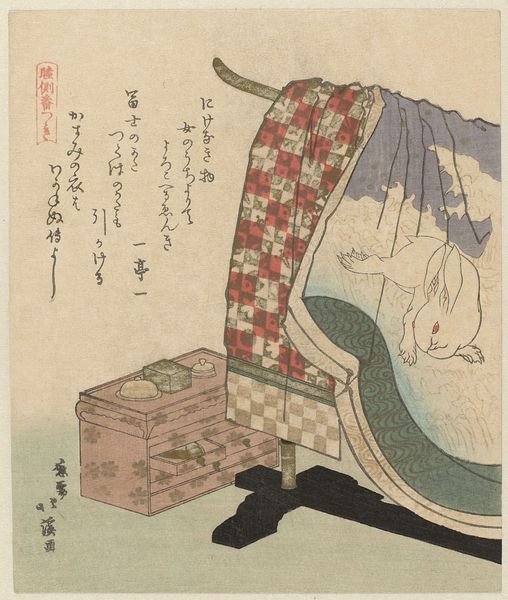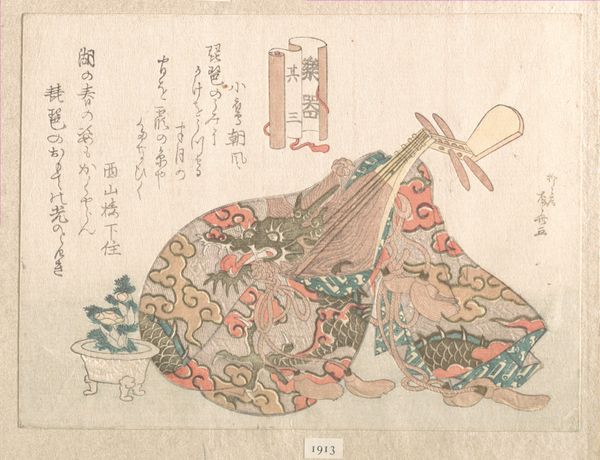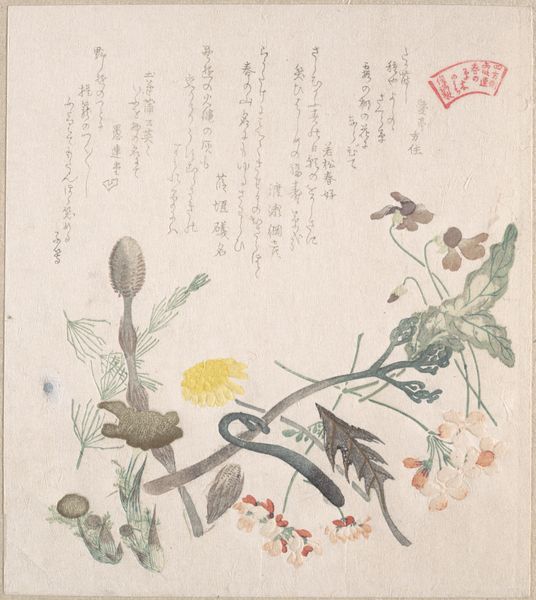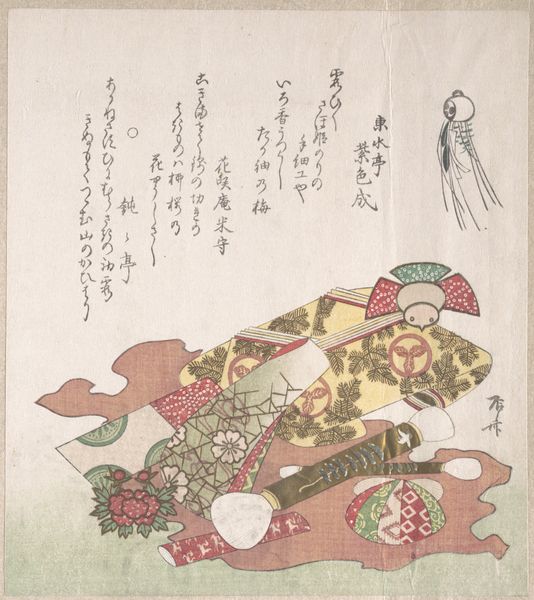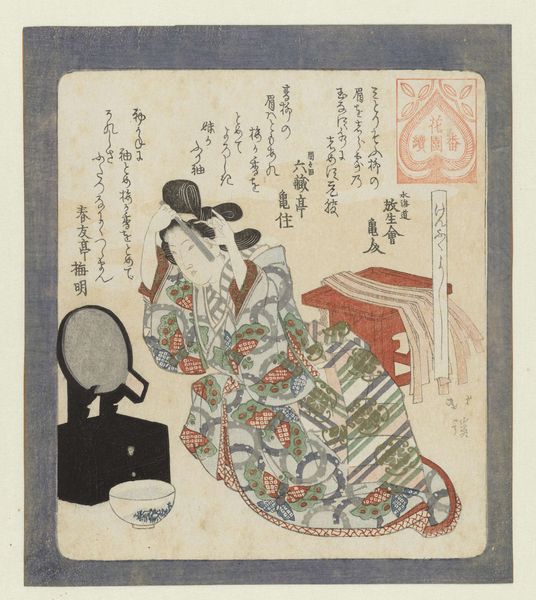
print, ink, woodblock-print
#
water colours
# print
#
ukiyo-e
#
pastel colours
#
ink
#
woodblock-print
#
watercolor
Dimensions: height 205 mm, width 184 mm
Copyright: Rijks Museum: Open Domain
Editor: Here we have Totoya Hokkei's "Silver Plum Blossoms," a woodblock print with ink and color from 1823, currently residing in the Rijksmuseum. The pastel colors and delicate lines give it such a serene, almost ephemeral quality. How do you interpret this work in terms of its cultural context? Curator: That serenity is definitely there, but I think it’s important to see that peace as potentially loaded. Consider the Ukiyo-e tradition. These “pictures of the floating world” often depicted pleasure quarters and celebrated a specific kind of beauty, but they also functioned as a form of social commentary, sometimes veiled and sometimes quite pointed. Who had access to this "floating world", and who did not? And what stories were suppressed in these images? Editor: That's interesting. I hadn’t thought about a possible political side of this kind of art. It felt so focused on the aesthetic. Curator: Exactly! That’s the trick. Now, look at the composition: a stark contrast between the dark bowl and the fragile blossoms, the calligraphy… does it strike you as a harmonic balance or something else? How does this image reinforce, or challenge, dominant narratives around gender roles? Editor: It's interesting to see a lot of what seems feminine and almost domestic adjacent to a rigid dark space. It almost makes me question its true harmony... Maybe there's an intentional imbalance meant to subvert norms. Curator: Precisely! Considering the historical context and gender expectations of the time, do you think Hokkei might be using this composition to offer a critique? Perhaps subtly empowering through artistic skill while also expressing discontent or hidden narratives? Editor: I guess I initially missed some important opportunities for understanding its meaning. Thanks, I’m going to think about all the different contexts next time. Curator: Likewise, It's a potent reminder that beauty isn’t always innocent and to approach art through a questioning lens.
Comments
No comments
Be the first to comment and join the conversation on the ultimate creative platform.
